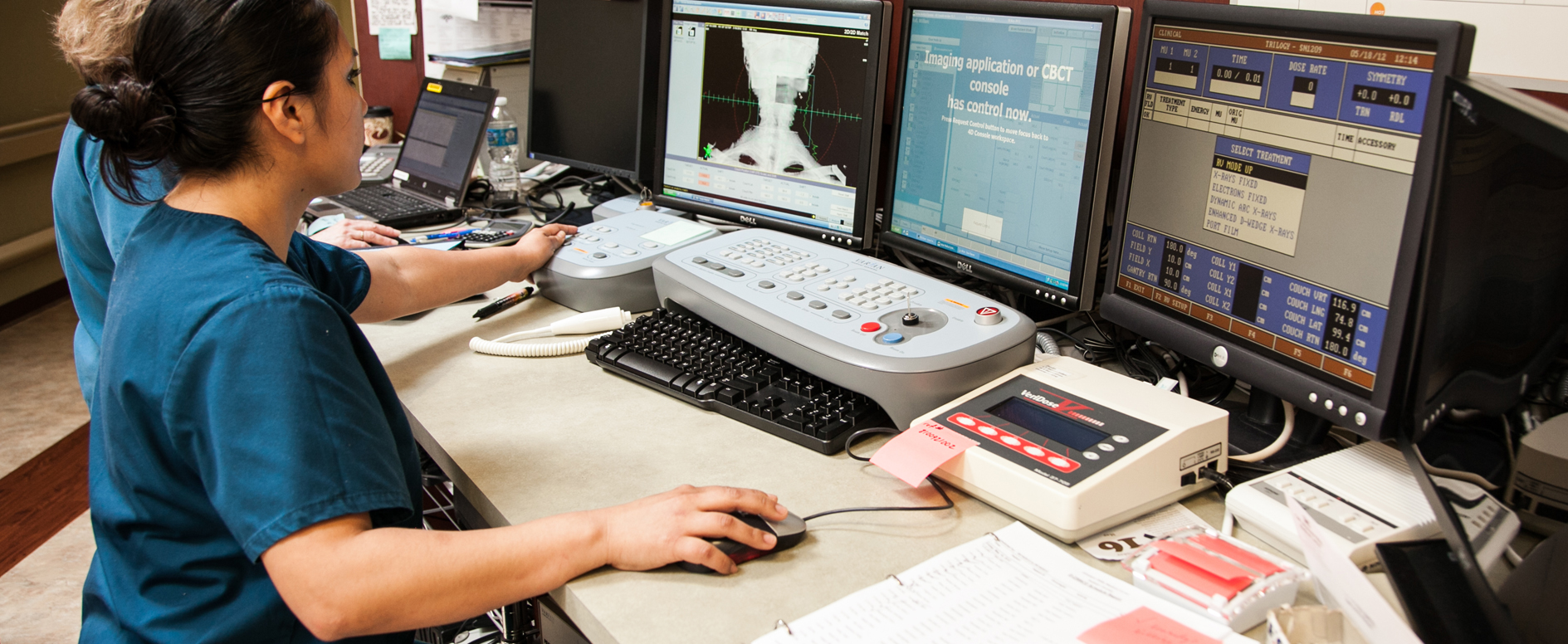
Radiation therapy, or radiotherapy, is the use of various forms of radiation to safely and effectively treat cancer and other diseases. Radiation therapy works by damaging the genetic material within cancer cells. Once this happens, the cancer cells are not able to grow and spread. When these damaged cancer cells die, the body naturally removes them. Normal cells are also affected by radiation, but they are able to repair themselves in a way that cancer cells cannot. Your radiation oncologist will develop a plan to deliver the radiation to the tumor area, shielding as much surrounding normal tissue as possible.
Your radiation oncologist may recommend using radiation therapy in a number of different ways. Often, the goal is to cure the cancer. In this case, radiation therapy may be used to:
- Eliminate tumors that have not spread to other parts of your body.
- Reduce the risk that cancer will return after you undergo surgery or chemotherapy by killing cancer cells that might remain.
- Shrink the cancer before surgery.
Sometimes, the goal is to reduce the symptoms caused by growing tumors, improving your quality of life. When radiation therapy is given for this purpose, it is called palliative care or palliation. In this instance, radiation may be used to:
- Shrink tumors that are harming your quality of life, such as a lung tumor that is causing problems with breathing.
- Relieve pain by reducing the size of a tumor.
It is important for you to discuss the goal of your treatment with your radiation oncologist.
Some patients are concerned that radiation therapy will cause another cancer. In fact, the risk of developing a second tumor because of radiation therapy is very low. For many people, radiation therapy can cure the cancer. This benefit far outweighs any small risk that the treatment could cause a later cancer. However, you should discuss the risks and benefits of all of your treatments with your treatment team. If you smoke, the most important thing you can do to reduce your risk of a second cancer is to quit smoking.
Radiation therapy has been used safely and effectively to treat diseases for more than 100 years.
What are the different kinds of radiation?
The goal of radiation therapy is to deliver enough radiation to kill the cancer cells while preventing damage to healthy tissue. There are several ways to do this. Depending on the location, size and type of cancer, you may receive one or a combination of techniques. Your treatment team will help you decide which treatments are best for you.
Radiation therapy can generally be delivered in three ways:
- External beam radiation therapy: The treatment team uses a machine outside the body to direct radiation beams such as high-energy X-rays at the cancer.
- Brachytherapy: This involves placing radioactive sources (for example, radioactive seeds) in or near the tumor.
- Systemic radiation therapy: Radioactive drugs are given to the patient and travel through the bloodstream to treat cancer throughout the body.






